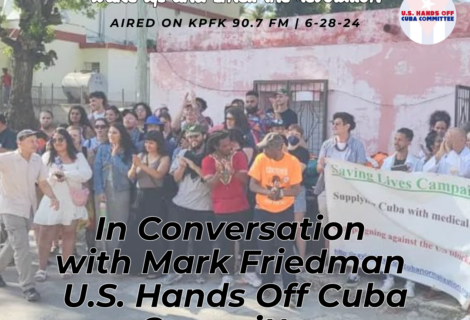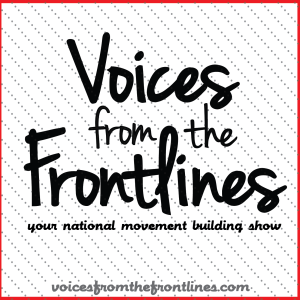Fare Play: Transit Rights Are Civil Rights for L.A.’s Bus Riders
In big, sprawling cities like Los Angeles, transportation is key. Without it, you can’t get to work, to the grocery store, or anywhere else you might need to go. For the middle class and the wealthy, the answer is the car. For everyone else, especially poor people of color, the answer has always been the bus.
And yet, the city of Los Angeles seems intent on dismantling its bus system. The Metropolitan Transit Authority (MTA) has cut more than 1 million hours of bus service, using the money to fund its ambitious new system of rails. Rail funding already receives the lion’s share of the MTA’s $4 billion yearly budget, but the agency also uses bus money to pay for cost overruns on their rail projects.
That’s not just playing favorites—it’s a civil rights violation. According to an on-board survey of bus riders conducted by the MTA in 2002, 90 percent of L.A.’s 500,000 bus riders are African-American, Latino, or Asian/Pacific Islanders. Bus riders are also 60 percent female and have an average family income of only $14,000. While the majority of train riders are also people of color, train ridership tends to be more white and affluent. Furthermore, people of color who ride the train usually depend on the bus to get to the station, and their commutes often involve several bus routes.
So when the city takes money away from the buses, it’s mostly poor people of color who get hurt. That’s why we at the Bus Riders Union (BRU), a transit advocacy group with 3,000 dues-paying members and 50,000 supporters, believe it is a violation of Title VI of the 1964 Civil Rights Act, which prohibits government agencies that receive federal funds from using them in a racially discriminatory manner.
We have made that case in court before, and won. Now we’re calling on the president to order the MTA to restore 1 million hours of bus service or risk the loss of federal funds.
Reaching Out to Obama
The Obama administration has done little to advance civil rights enforcement. So why are we asking him to stand up for civil rights now?
First off, he’s one of the few people truly able to help. For the past year, we have been working with Peter Rogoff, the chief of the Federal Transit Administration, to make the case that MTA is again violating Title VI of the Civil Rights Act. Mr. Rogoff investigated the MTA and found it guilty of many procedural civil rights infractions. At the last minute, however, he stopped short of ordering the agency to restore the 1 million hours of bus service the MTA had cut.
That is where President Obama can intervene. He can simply call the Federal Transit Administration, indicate that his staff has investigated the situation, and ask them to order the MTA to restore the bus service.
We’re asking him to do that in a new campaign called “President Obama: Enforce, Restore, and Expand Our Civil Rights.” We kicked it off with a rally on July 25, in which more than 500 people demonstrated on the steps of City Hall in Los Angeles. The group was young and mostly black and Latino, with Korean drummers and white supporters.
Demonstrators called on the president to restore the cut bus service. They also called on Mayor Antonio Villaraigosa—who serves as chair of the MTA board and who voted for many of the cuts—to urge the president to get those hours back. Villaraigosa is in the perfect position to do that because he will chair the Democratic National Convention in Charlotte, N.C., in September.
The Bus Riders Union (BRU) has framed this as a battle for the soul of L.A., but the same fight is going on in cities around the country. On one side is a bus-centered, sustainable urban plan that offers green jobs and draws support from working people of color. On the other is a rail-centered, gentrifying plan supported by real-estate developers, chambers of commerce, and the owners of local hotels and restaurants. The bus-centered plan will create a more sustainable city in which poor people of color can remain in the neighborhoods they’ve built and lived in for decades. The rail-centered plan will leave the city a hollow shell as rails languish in construction, working people are displaced, and cars dominate the roads.
Buses and trains aren’t inherently opposed. We could imagine a system in which the two worked together, as they do in cities like New York and Chicago. However, in Los Angeles, the MTA has initiated a war against the bus system in its efforts to fund rail construction.
Bus Riders Fight the Law, and Win
The situation wasn’t always so dire. As late as 1984, after then-mayor Tom Bradley made significant investments to the city’s bus system in preparation for the Olympics, L.A. had a pretty good bus system. Ridership skyrocketed in response to reduced fares. And yet, by 1992, when the Bus Riders Union was founded, the MTA had turned to building expensive rail projects that depleted bus funding.
In 1994, the MTA board voted to raise the price of a one-way bus ticket from $1.10 to $1.35 and to eliminate the monthly bus pass altogether. That move more than doubled the monthly cost of transportation for low-income bus riders, raising it from $42 to more than $100. Luckily, the Bus Riders Union had spent a year on the buses of L.A. building a grassroots base. Together with the NAACP Legal Defense and Educational Fund, we took the MTA to court and charged the agency with establishing a separate and unequal transit system and therefore violating Title VI of the 1964 Civil Rights Act.
The federal courts agreed. They ordered the MTA to reverse the fare increases and reinstate the monthly bus pass. That led to a negotiated Consent Decree, a written agreement between the Bus Riders Union and the MTA with specific provisions to dramatically improve the bus system. Throughout ten years of negotiations, the BRU was able to win 2,500 new Compressed Natural Gas clean-fuel buses, an affordable bus pass, and 1 million additional hours of service. Altogether, it amounted to $2.7 billion in improvements to the bus system.
The changes in working people’s lives were palpable. Over ten years, the number of people standing on the average bus in L.A. decreased from about 35 to about 12. Brand-new buses with wheelchair access took the place of twenty-year-old diesel buses that often broke down on the streets. Bus riders still had their gripes about the system, but they were appreciative and, for the first time in years, even happy.
Is It Really Just “the Market”?
The good times lasted only as long as the federal government was watching. As soon as oversight was lifted in 2006, the MTA again began to attack the bus system. Over the next four years, the agency raised the price of the monthly pass from $52 to $75 and cut 1 million hours of bus service, all while expanding rail construction.
Low-income bus riders were again late to school and work, and spent long hours waiting for the bus. The old crowding came back. For many people, hour-long commutes doubled in length. Hopes of finding new jobs in in other parts of town were extinguished for those without the money to own a car.
Meanwhile, new rail hubs, such as the one at Hollywood and Vine, created economic booms for high-priced condos and upscale restaurants. The government was subsidizing the wealth of these neighborhoods, and it didn’t come cheap. In L.A., it cost $500 million to build one mile of subway. For the same money, they could buy one thousand buses, increasing the size of the fleet from 2,500 to 3,500.
Some people look at recent changes in Los Angeles and say that gentrification is about providing what “the market” wants. But the story of the MTA’s approach to transit funding shows how deeply city policy shapes that market. A reliable bus-centered system serves all neighborhoods, helps working people keep their jobs, and provides a market for affordable food, housing, and services. The rail-centered system that the MTA has been pushing leaves entire parts of the city only accessible by bus. It pushes working people out of the city and creates an artificial market for luxury condos, pricey restaurants, and big hotels.
And Then There’s the Issue of Climate…
The BRU’s parent organization, the Labor Community Strategy Center, has been among those who insist that global warming requires dramatic and immediate reductions in greenhouse gas emissions. At the 1992 World Summit on Sustainable Development in Johannesburg, South Africa, we heard representatives from the Association of Small Island States speak about the dangers they faced from raging, heated waters.
Deeply influenced, we went back to L.A. and initiated a climate justice campaign called Clean Air, Clean Lungs, Clean Buses. We laid out plans for auto-free zones, auto-free days, bus-only lanes, an additional 2,500 buses, and a moratorium on new rail construction. Together, these reforms would dramatically reduce auto emissions.
We went to work to realize these plans and, working together with the MTA and L.A. City Council, we won agreement on the city’s first bus-only lane, planned for Wilshire Boulevard, the busiest surface street in the country. We hope to see it open in 2015.
So far, however, that is the exception that proves the rule. The MTA has refused to consider building a network of bus-only lanes throughout the city, a plan that could be completed in three years. Instead, it is moving full-speed ahead on its rail projects, which it admits won’t be completed for twenty years.
So here you have a county of 10 million people, who drive 7.5 million cars. That’s more cars in one county than you’d find in 45 entire states. In order to do our part for the climate, we must radically reduce auto use in Los Angeles and other sprawling cities. The bus system represents our best chance to do that because it is affordable, adaptable, and it’s ready now.
What’s more, new developments in technology are making buses faster and more reliable around the world. Simple improvements include signal synchronization, or traffic lights timed for rapid movement; freeway buses that run on protected rapid lanes; systems of bus-only lanes, and 24/7 service. More cutting-edge is Bus Rapid Transit, a unified system that involves physically separated bus lanes, pre-boarding fare payments, and a control center that manages the system. It’s working great in Curitiba, Brazil, and Bogotá, Colombia. This is our vision for the future of transportation in Los Angeles.
Will President Obama Stand Up for Civil Rights?
President Obama has repeatedly expressed his gratitude to the civil rights movement for making his election thinkable and possible. Now he should support today’s civil rights movement, which, in the tradition of Dr. King, is focused on the needs of the poor and oppressed.
Los Angeles is a test case for continuing progress in civil rights and environmental justice. It is also a crucial source of fundraising dollars for Mr. Obama. We are requesting that donors to the Democratic Party ask the president to intervene on behalf of Los Angeles bus riders.
The Dream Act students and the LGBTQ movement have shown that this president will adopt progressive policies in response to effective, constructive organizing. And that’s something that the members of the Bus Riders Union have going for them. I have never seen them so energized. They stood on the steps of City Hall, empowered by the knowledge that they are part of a growing movement that has working people at its center.
Eric Mann wrote this article for YES! Magazine a national, nonprofit media organization that fuses powerful ideas with practical actions. Eric is the director of the Labor/Community Strategy Center in Los Angeles. He was the co-chair of the Consent Decree’s Joint Working Group for the full 10 years of its existence. He is the author of Playbook for Progressives: 16 Qualities of the Successful Organizer.
Originally published in Yes! Magazine on August, 23rd 2012. Photo by Waltarrrrr.







Trackbacks for this post